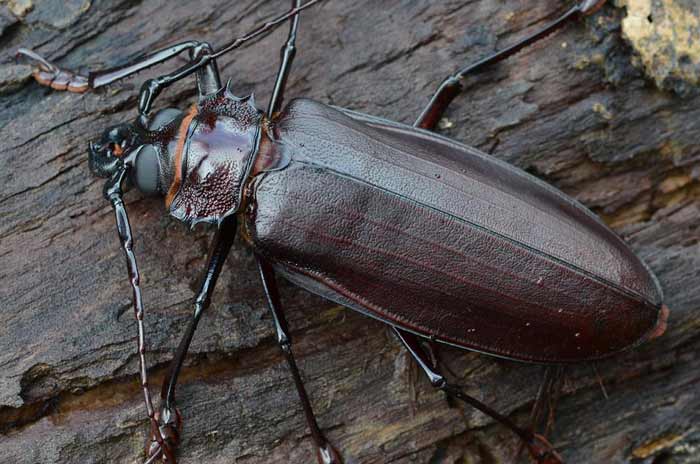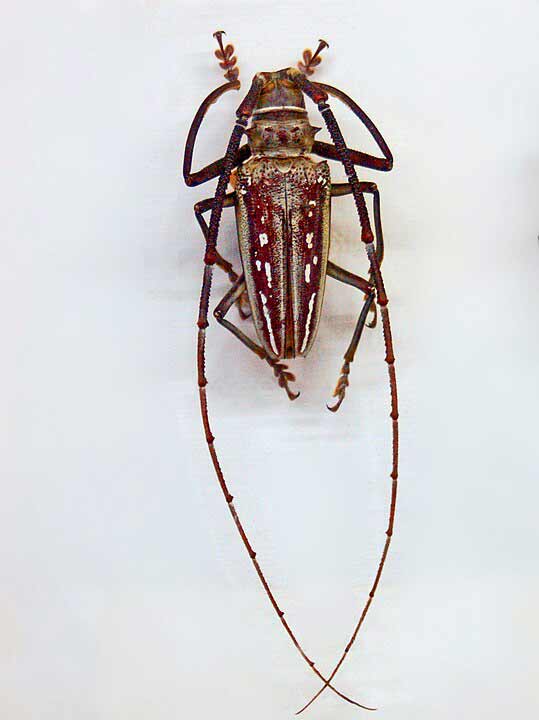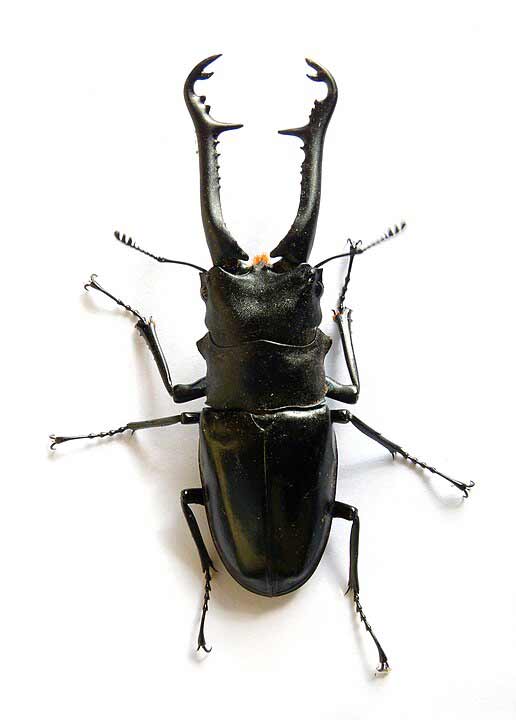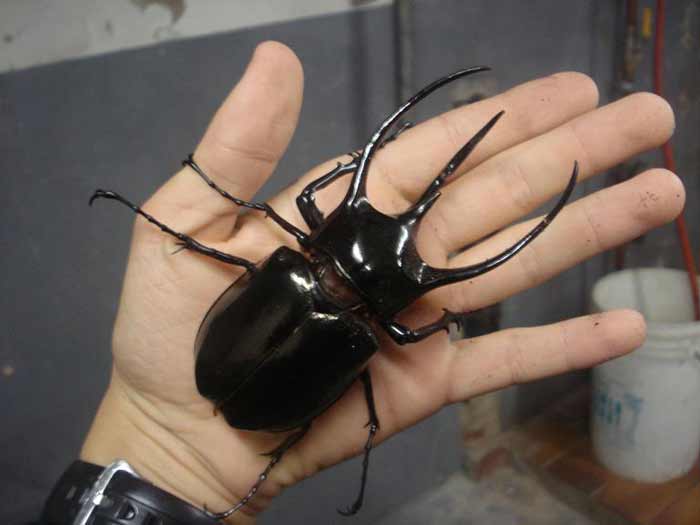Beetles, with over 350,000 known species, are among the most diverse and widespread creatures on the planet.
Their sizes vary significantly, with some species being incredibly tiny, while others are impressively large.
This article will introduce you to the top 10 largest beetles in the world, highlighting their unique characteristics, sizes, and habitats.
| Rank | Insect Name | Size |
|---|---|---|
| 1 | Titan Beetle | Up to 6.5 inches |
| 2 | Hercules Beetle | Up to 7 inches, including horn |
| 3 | Goliath Beetles | up to 4 inches |
| 4 | European Stag Beetle | Up to 2.5 inches |
| 5 | Elephant Beetle | Up to 2.5 to 4.75 inches |
| 6 | Wallace’s Long-horn Beetle | Up to 10.5 inches, including antennae |
| 7 | Actaeon Beetle | 2 to 5 inches |
| 8 | Giraffe Stag Beetle | Up to 4.7 inches |
| 9 | Caucasus Beetle | 2 to 2.5 inches |
| 10 | Atlas Beetles | up to 4.7 inches |
1. Titan Beetle

The Titan Beetle (Titanus giganteus) holds the title for the world’s largest beetle by body length, reaching up to 6.5 inches.
They are primarily found in the rainforests of Colombia, Peru, Bolivia, Brazil, and Ecuador.
Despite their intimidating size, they’re more closely related to longhorn beetles than cockroaches.
Their sharp mandibles can easily cut human skin and even snap small branches.
2. Hercules Beetle

The Hercules Beetle (Dynastes hercules) is renowned for its massive horn, which males use for combat.
They can reach up to 7 inches in size, including their horn, and are native to Central and South America.
Without the horn, their body length is about 3 inches. They primarily feed on wood and fruit.
3. Goliath Beetles

Goliath Beetles (Goliathus spp.) are among the heaviest insects, with males reaching up to 4 inches and females around 2 to 3 inches.
They are native to the tropical forests of Africa.
Their larvae can weigh up to 3.5 ounces, and they have six legs with sharp claws, allowing them to climb trees efficiently.
4. European Stag Beetle

The European Stag Beetle (Lucanus cervus) is known for its prominent pincer-like mandibles.
They can vary in size, reaching up to 2.5 inches or more, depending on the country.
They are primarily found across Europe. Males use their mandibles in combat, especially when competing for a mate.
5. Elephant Beetle

Named for the males’ long, trunk-like horns, the Elephant Beetle (Megasoma elephas) can range in size from 2.5 to 4.75 inches. They are native to Central and South America.
Their bodies are covered in fine yellow hairs, giving them a golden tinge.
6. Wallace’s Long-horn Beetle

While not bulky, the Wallace’s Long-horn Beetle (Batocera wallacei) is the world’s longest beetle, primarily because of its massive antennae, reaching up to 10.5 inches.
They are found in New Guinea, parts of Indonesia, and Australia.
7. Actaeon Beetle

The Actaeon Beetle (Megasoma actaeon) is one of the heaviest insects, with larvae weighing nearly 8.5 ounces.
Males can range from 2 to 5 inches in size and have long horn-like protrusions, making up a significant portion of their body length. They are native to South America.
8. Giraffe Stag Beetle

The Giraffe Stag Beetle (Prosopocoilus giraffa) is the largest member of the stag beetle family, reaching up to 4.7 inches.
They are native to Southeast Asia. Males have large mandibles, which they use like antlers in combat.
9. Caucasus Beetle

Known for their W-shaped horns, the Caucasus Beetle (Chalcosoma chiron) sees males reaching up to 5 inches and females around 2 to 2.5 inches.
They are primarily found in Malaysia and Indonesia.
10. Atlas Beetles

Named after the Greek titan, Atlas Beetles (Chalcosoma atlas) are known for the males’ three long, curved horns.
Males can reach up to 4.7 inches, while females are around 2 inches.
These beetles are native to Southeast Asia and use their horns in combat for food, territory, and mating rights.
Conclusion
Beetles, despite their small size relative to other animals, have some giants in their ranks.
These ten beetles are not only impressive in size but also in their unique characteristics and adaptations.
Studying them offers a glimpse into the incredible diversity and adaptability of nature.
FAQs
The Titan Beetle (Titanus giganteus) holds the title for the world’s largest beetle by body length.
The Hercules Beetle is native to Central and South America.
Goliath Beetles are among the heaviest insects and are native to the tropical forests of Africa.
The antennae of the Wallace’s Long-horn Beetle can reach up to 10.5 inches.
The Elephant Beetle is named for the males’ long, trunk-like horns.
The Caucasus Beetle is known for its distinctive W-shaped horns.
No, most large beetles are harmless to humans. For instance, the Titan Beetle, despite its intimidating size, primarily feeds on wood and plant matter.
Many of these beetles, like the Hercules and Elephant Beetles, primarily feed on wood and fruit. However, their diet can vary based on the species and habitat.



